Grinnell Regional #7 tournament (Iowa)
THWACK! The sound of each bag smacking the opposing board across the room fills the air. The smell of french fries and beer from the bar on the other side of the room leaks into the competitive air. Players from across the Midwest throw their bags and do what it takes to get in the zone for the American Cornhole League’s (ACL) seventh regional tournament of the year in Grinnell, Iowa. Some players throw a certain amount of bags on each side of a board, some listen to their favorite music during warmups, and some drink their favorite beer. Whatever it takes for each player to prepare, they’re doing it. Players from Kansas City, MO. practice on one set of boards, while on the next set over, a team from Cedar Rapids, Iowa prepares.
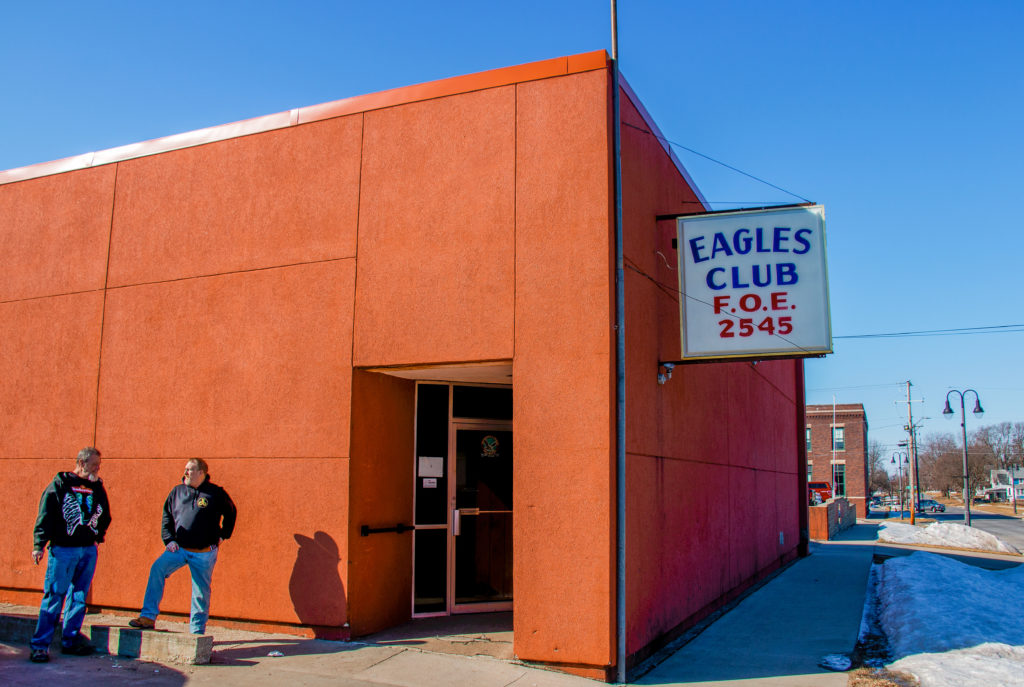
The cornhole community, though not large, is rapidly growing throughout the nation and its members are some of the most passionate of any sport. Some practice up to five hours a day, this entails throwing a cornhole-filled bag hundreds of times and certainly getting their steps in between trips from board to board. Over 100 people gathered to play and root for their friends, family, and simply have a good time. Brian Ash is the Midwest Conference Director for the ACL, putting him in charge of the Grinnell Regional #7 tournament. Ash is also the only professional player Iowa has in 2020.
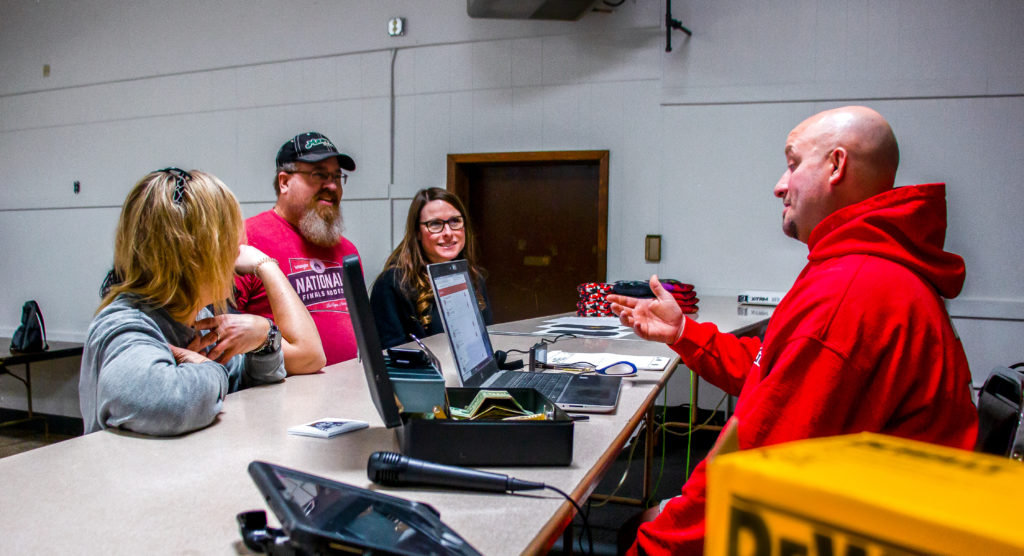
“In rural Iowa, we’re pulling about 40 teams [on] average right now,” Ash says. “When I started this three years ago, it was about nine, so we’ve grown quite a bit.”
Ash described that ACL players who have not earned professional status yet, currently host local tournaments throughout Iowa. Local tournaments are the most basic, entry-level tournaments there are. Anyone is eligible to play. Ash travels throughout the Midwest to put on regional tournaments. These tournaments are available for anyone to enter as well, but the biggest difference between the two types of tournaments is the point totals that the winners receive.
Winning a local tournament is worth 30 points, while ranking first in a regional is worth 100 points. Each player gets to count their best five regionals toward their total points, but can play in however many they would like. At the end of each cornhole season, the advanced players try to qualify to get into the pro tournament. It is at a pro tournament that advanced players can qualify for professional status. To get into a pro tournament, a player has to be in the top-50 in the nation. In 2019, the ACL hosted approximately 10,000 tournaments, including roughly 200,000 cornhole players. To qualify as a pro, a player needs to be the best of the best.
History of the game
Cornhole, bags, bean bag toss, baggo, all refer to the same game. The game where two teams, either one vs. one or two vs. two, take turns tossing bean bags into opposing wooden platforms with a hole slightly above the middle of the face of the board. The goal is to score a bean bag in-the-hole. Yes, there are more rules to the game, regulation-sized boards and bags and everything in between, but whether you’re looking for outdoor family fun, the perfect tailgating game, or to compete competitively, cornhole might just be the game.
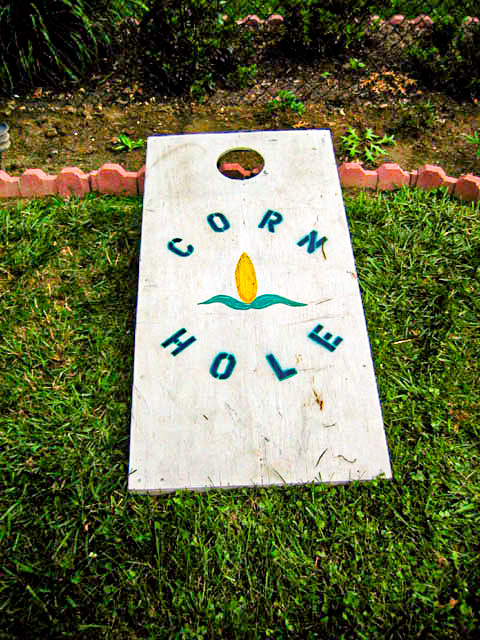
Where it started
If you’ve ever been to the Midwest, then there is no doubt that you are at least familiar with the sight of the sport. Whether you call it bags or cornhole, the name “cornhole” comes from each bag that is filled with corn, with the objective of trying to throw it into the hole. Some say that cornhole in its early stages has been around since the 14th century, others say the game didn’t make its way to lawns until the late-1800s. Although there is no official founding date for the bag-throwing American tradition, it is safe to say that it has existed for the last several hundred years. The first official rendition of cornhole can be traced back to Heyliger de Windt’s 1883 patented “Parlor Quoits.” Quoits, as it is now known, had a square hole in the upper middle part of the board, instead of a circle. Today Quoits has evolved into a completely different game, but Heyliger de Windt was the first to introduce throwing bean bags, instead of disks and other heavy items.
Shortly after Parlor Quoits’ conception in 1883, American newspapers popularized the game. It was explained and covered in over 20 newspapers and by 1885 became a popular American game. The game was a fad, but it was then that it began getting adapted by others. One of these adaptors was Morton E. Converse. Converse’s family owned several companies, including a toy company out of Winchedon, Mass. This is significant because Morton E. Converse & Co. went on to become the first large-scale toy manufacturer in the U.S. The company began to produce the game at a rapid rate, under Converse’s new name, “Faba Baga.” Faba is the latin word for bean, while baga has no direct translation. Faba Baga was the spinoff of Parlor Quoits, where there were instead two bean bags of different sizes and two holes on the slanted, wooden board (different point totals). It was from there that more American game makers saw the traction that the bag-tossing game had gained throughout the country and began producing their own versions.
According to The Delaware Corn Hole website, the 1974 September issue of Popular Mechanics magazine included instructions on how to build a bean bag game, even including a diagram and picture of what the boards looked like. This was believed to be the first wide-spread photograph of what a cornhole set should look like. The dimensions were slightly different than the regulation-sized boards of today, but were pretty close.
Ohioans, specifically from Cincinnati believe that they are responsible for popularizing the modern-day phenomenon. Whether that’s true or not, we may never know. The game has been on the come up for the past few decades and has even had a tournament hosted at Soldier Field, the home of the Chicago Bears in Chicago back in 2008. The Wall Street Journal picked up the story and provided rules and first-hand accounts by Chicagoans during the tournament.
Governing bodies of professional cornhole
Professional and amateur cornhole in America is sponsored by three different bodies: the American Cornhole Organization (ACO), the American Cornhole League (ACL) and the American Cornhole Association (ACA). These three organizations each have their own set of rules for official cornhole play, sell merchandise, and host tournaments across the country. The ACO and ACL are the two more serious organizations focused on popularizing the sport through tournament play and televised events, while the ACA is more of a merchandise retainer. The ACA still does showcase a few tournaments each year, but that is not its main focus.
American Cornhole Organization (ACO)
The ACO, based in Milford, Ohio, was founded in 2005 by Frank Geers. It is a governing body for cornhole, running and promoting professional & recreational cornhole tournaments and leagues through its nationwide network of ACO certified officials. The ACO has formalized official cornhole rules, has established a system for cornhole players handicap and established the ACO World Rankings for the sport of cornhole. The ACO has about 24 individuals working as a part of the administration, including eight regional league commissioners. The American Cornhole Organization is the longest-tenured body of professional cornhole. They have sponsors, award cash prizes for players, and host amateur tournaments for those interested in getting more involved in the sport.
American Cornhole League (ACL)
The ACL was founded in 2015 by Stacey Moore. Moore originally founded the company as the American Tailgating League (ATL), consisting of cornhole, ladder golf, beer pong, and other games, but soon after saw cornhole as the fan favorite. Due to the financial success and popularity among participants of the cornhole part of the business alone, Moore rebranded transforming the ATL into the ACL. The ACL travels across the nation hosting tournaments at the professional level, college level, and amateur level. The ACL promotes and develops cornhole as a sport for any age and any skill level. The organization establishes the rules and regulations to govern the sport around the world. At the collegiate level, teams who win tournaments are awarded anywhere from $1,000–$10,000. The ACL also awards scholarship money to those players and to the school’s recreational program to expand their cornhole league. The main focus of the ACL at the collegiate level is to establish cornhole as a recreational or club sport on college campuses across the nation.
American Cornhole Association (ACA)
The ACA was created to provide quality cornhole-related products to the public. It functions more as a merchandise retailer than a tournament-fostering organization. According to its website, “[o]ne of the most important ways to achieve this goal is for people to have high-quality equipment to play on.” A typical set of cornhole boards rings up between $200–$300, while a set of four bags costs between $7–$12. “All weather” bags are more expensive than standard bags, due to weather proof resin pellets that reside inside each bag for long-lasting outdoor durability. Although the ACA sells regulation cornhole equipment, it does host a few tournaments each year.
The rise of one of the nation’s best
At only 21 years old, Jamie Graham, from Hamlet, N.C., has emerged as one of the U.S.’s best pro players. He is currently ranked No. 1 in the pro singles category by the American Cornhole League and No. 3 (with Frank Modlin) in pro doubles. Graham’s infatuation for cornhole was born at a family reunion in 2014. He saw family members tossing bags and thought that it would be fun to do. Once getting back home, Graham’s older brother, Steven, bought a set of boards and some bags. The Graham brothers began practicing and playing for hours at a time, several times a week. Once their confidence was built up, they entered as a doubles team in a local tournament.
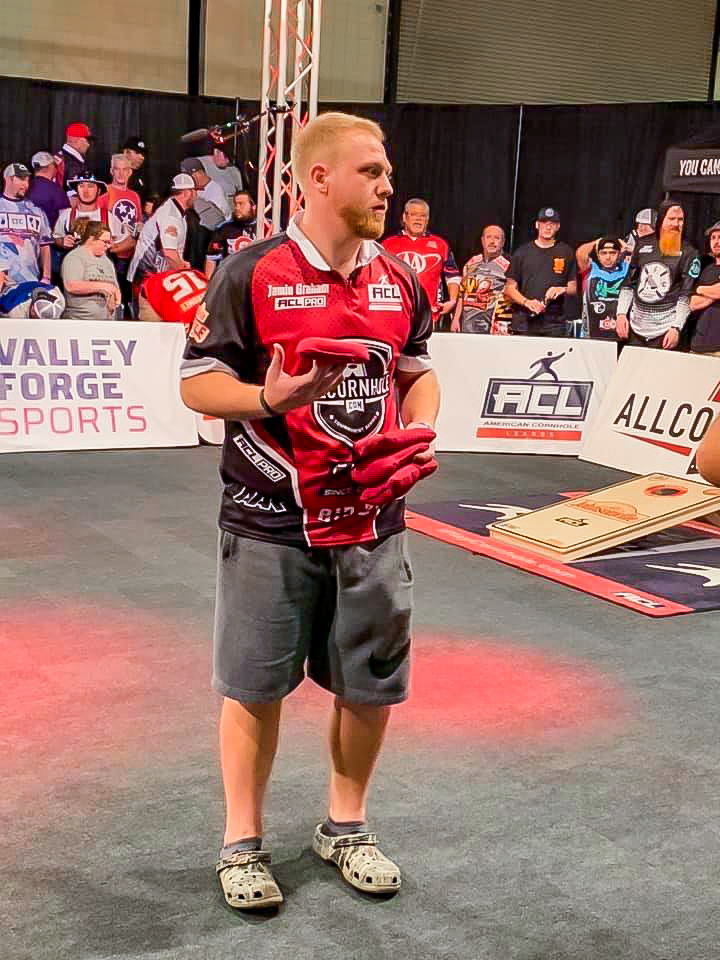
“We thought we’d kill it but we got killed by guys I’ve never met before,” Graham says. “They were killers and they knew what they were doing!”
Graham knew that cornhole was an up and coming sport that he wanted to become great at. He turned pro in 2015 with the American Cornhole Organization (ACO), before shifting over as one of the ACL’s premiere athletes. He no longer competes in ACO tournaments. Graham practices between 1-3 hours a day, seven days a week to hone his craft, competing in up to 10 tournaments a month.
“I didn’t ever think you could make so much money playing the game of cornhole,” Graham says. “I honestly think [with]in the next 5 years you can make a living on the game! My goal is to be a professional cornhole player that lives on the game I love.
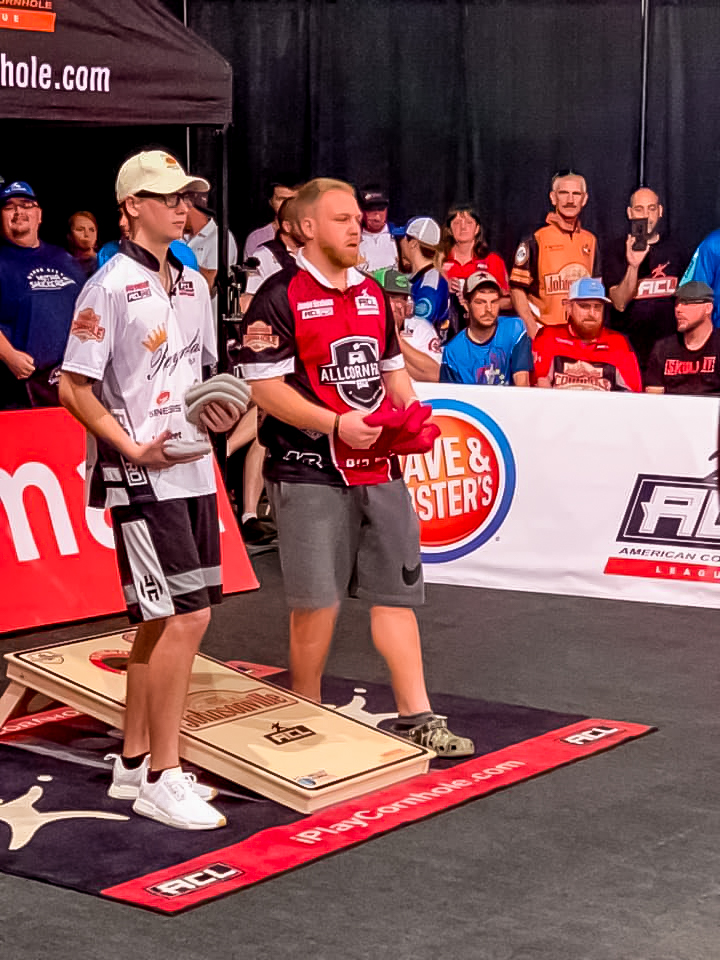
The 21-year-old phenom says he has made roughly $30,000 since launching his professional career. He competes in pro singles tournaments and pro doubles, but considers himself as more of a singles player. Graham can be found all over ESPN2 sinking four baggers, knocking off top-ranked opponents, and playing in championship games, during ACL tournaments.
“What I enjoy the most is going to out of town cornhole tournaments and seeing everybody,” Graham says. “But what I love most is competing against other players and winning!”
Looking into the future
Ash has worked to expand professional cornhole over the last decade, first beginning as an amateur player, transitioning to an advanced player and regional director and most recently a professional player. A feat like this would not have been possible without help.
Gary Edwards, an amateur player in Iowa, has been playing with Ash for the last few years. Together the two practice several nights out of the week, travel throughout Iowa for tournaments, and improve each other’s level of play. Edwards also helps host local tournaments in Iowa.
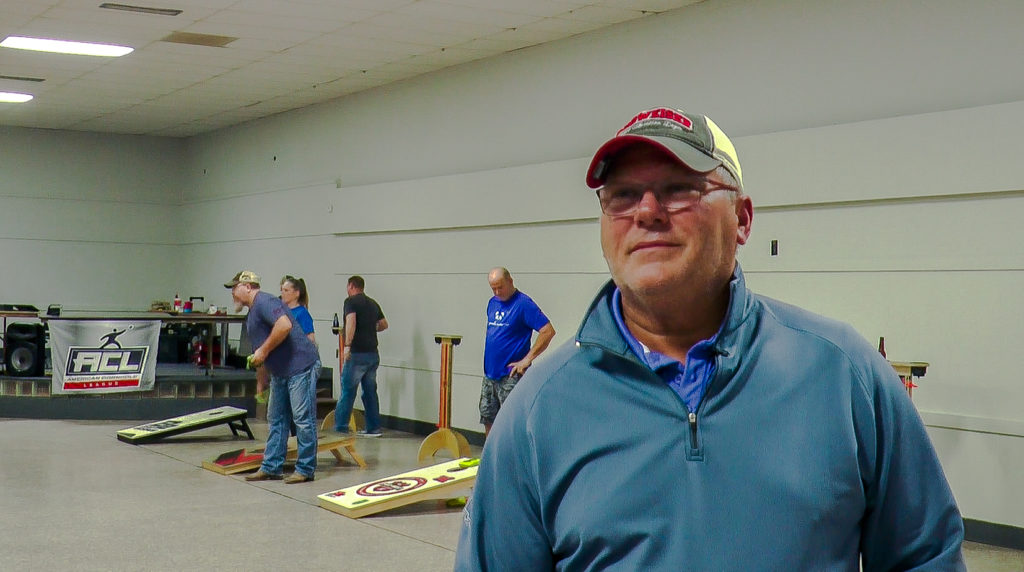
“We’d have a tournament and you’d have maybe five boards set up,” Edwards says. “We’ve gone from five to nine at times, sometimes 10 boards and the quality of the equipment has changed dramatically.”
Each set of bags used to be filled with corn kernels only. The length and width of each board used to be slightly longer and the hole larger. Once professional leagues started to create regulations for equipment, the game changed forever. Bags today can be found filled with resin or corn kernels, as well as fully slick (to slide across each board) or half slick, half stick. The slick side is made with duck cloth to slide a bag around a blocking bag by an opponent. The sticky side is made with a suede material to block an opposing throw.
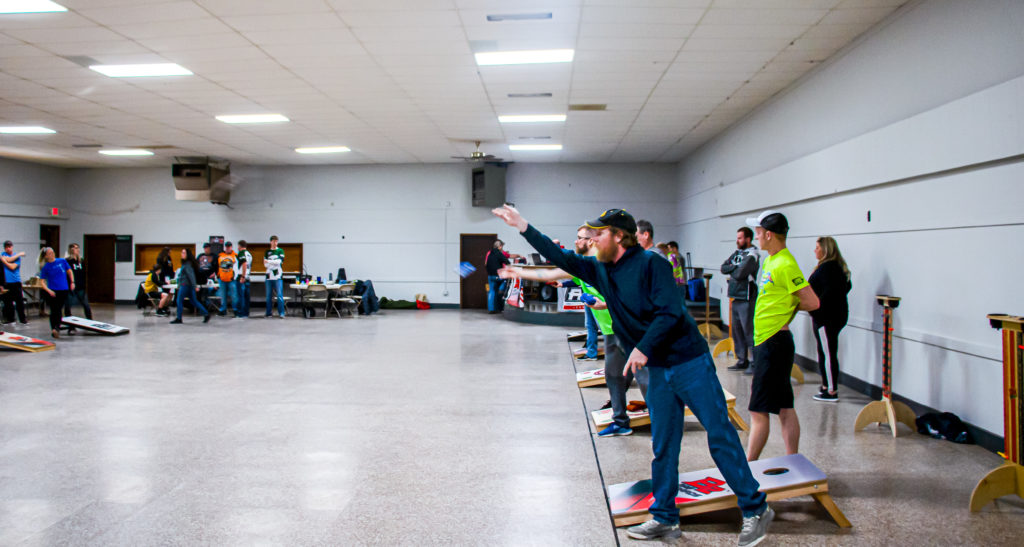
Today, hundreds of Iowans participate in the sport in competitions. Cornhole is rising in popularity nationwide and has thousands of players and supporters. Whether you’re picking up a bag for the first time, or have been playing competitively for years, cornhole is a game that is fun for everybody. For those who travel to participate in tournaments, the camaraderie alone is enough for some to stay engaged into their later years.
Only time will tell, but the future for this sport is promising. As leagues grow, sponsorships increase, and pro players travel throughout the country, the best of the best will be able to live off of the game that they love and continue on and on for years to come.
For an inside look at the Grinnell Regional #7 tournament and more information on the sport of cornhole and its growth, watch the video below.

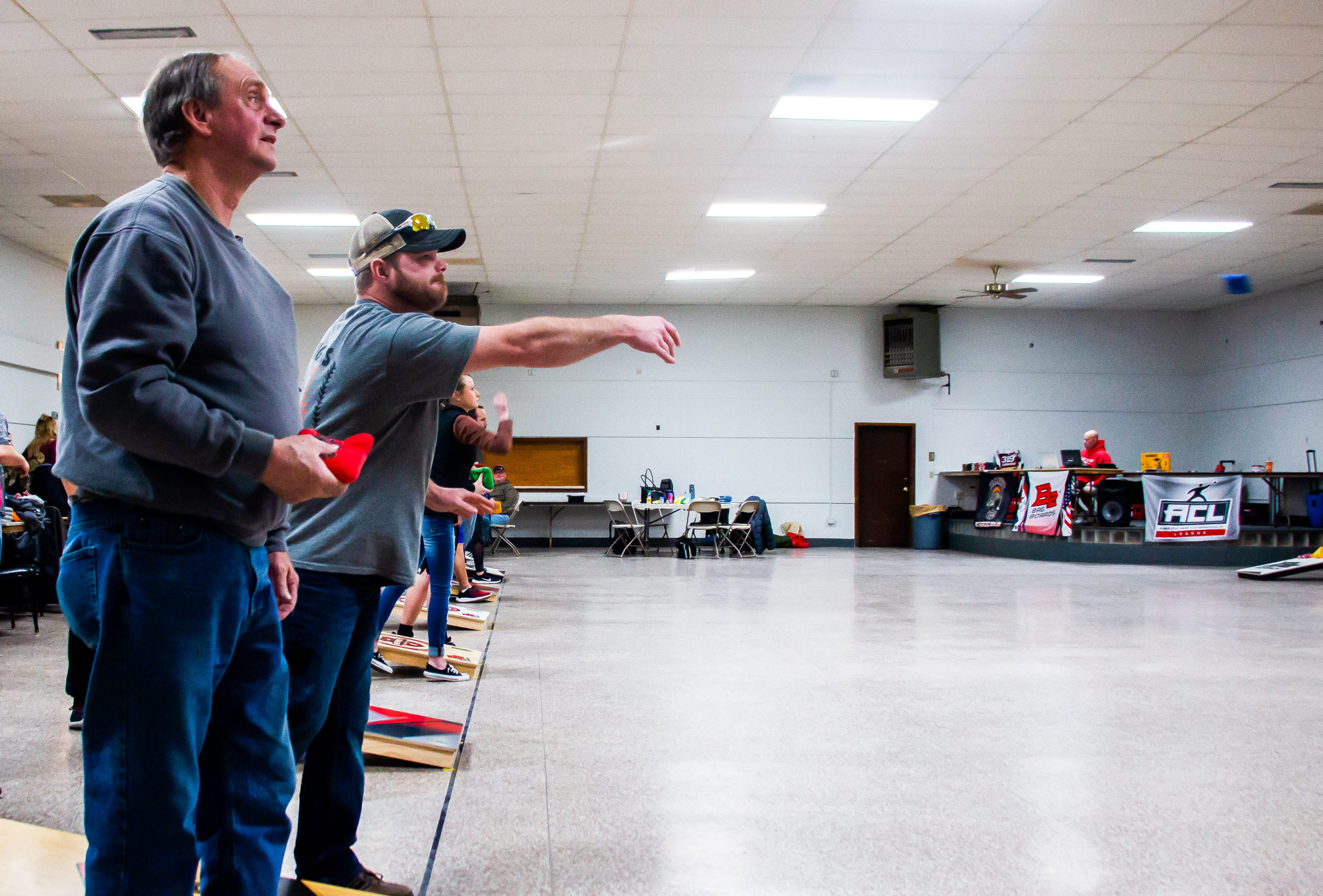
I like playing cornhole. I like playing with my sons. It’s a nice family game. Sometimes I even win, sometimes. I liked this story because it taught me a lot about the origin of the game and how popular it has gotten. You don’t have to be in shape or young to play. This is a game for anybody, and even the most unpopular person in the room could be good!
Great story. Continue to follow the sport and I will continue to listen.
I